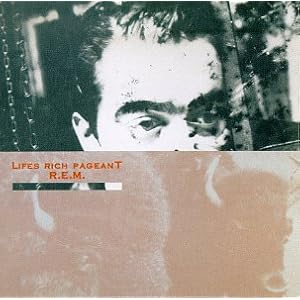
The D Man has been reinvesting in his early R.E.M. catalog. Seeking lyrical elegance. Melodic refuge. Arguably the definitive American band of the past 30 years, R.E.M. are the inspired fathers of indie-rock and have a story arc almost unparalleled given such an incredible trajectory across so many great albums. While driving home tonight and listening to the song below, I remembered what makes this band so special. For a fleeting moment, I thought I might be listening to the finest song ever recorded. At the very least, you should enjoy "I Believe" from the band's fourth album Lifes Rich Pageant. A brilliant song unlike anything else. Call it a friendly reminder. (Lyrics provided below, because as you might know, you won't find them in the liner notes).
And spirited, a rattlesnake
When I was young and fever fell my spirit
I will not tell
You're on your honour not to tell
I believe in coyotes and time as an abstract
Explain the change
The difference between
What you want and what you need
There's the key
Your adventure for today
What do you do between
The arms of the day
I believe my shirt is wearing thin
And change is what I believe in
When I was young and give and take
And foolish said my fool awake
When I was young and fever fell my spirit
I will not tell
You're on your honour
On your honour
Trust in your calling
Make sure your calling's true
Think of others
The others think of you
Silly rule, golden words make practice practice makes perfect
Perfect is a fault and fault lines change
I believe my humour's wearing thin
And change is what I believe in
I believe my shirt is wearing thin
And change is what I believe in
When I was young and full of grace
As spirited a rattlesnake
When I was young and fever fell my spirit
I will not tell
You're on your honour
On your honour
I believe in example
I believe my throat hurts
Example is the checker to the key
I believe my humor's wearing thin
And I believe the poles are shifting
I believe my shirt is wearing thin
And change is what I believe in





